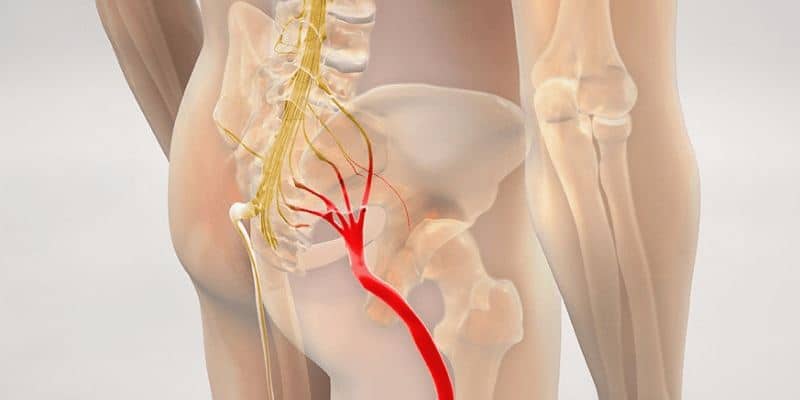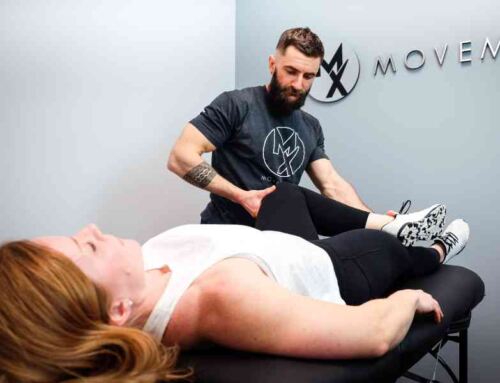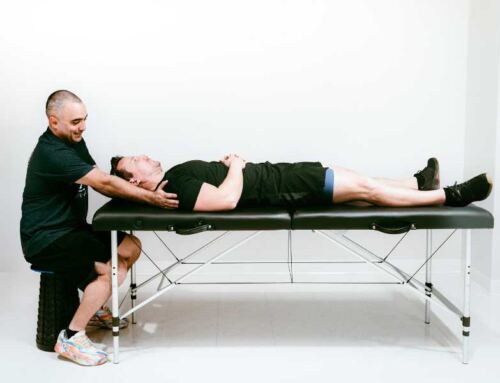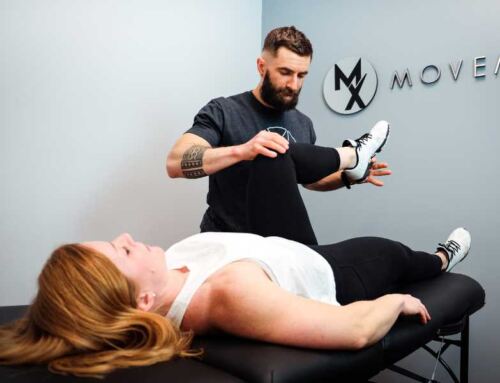Spine Care: Treating Sciatica With Physical Therapy
Roughly 40% of people experience sciatica at some point during their life.
If you are experiencing sciatica, there are various treatment options to help reduce your pain and improve your mobility so you can get back to doing the things you love.
In this article, we’ll cover everything you need to know about sciatica, its root causes, and how physical therapy is an effective treatment option to help you decrease your symptoms, regain your strength, and restore normal function.
What Is Sciatica?

Sciatica is a clinical diagnosis based on the presence of pain, numbness, or tingling along the distribution of the sciatic nerve.
The term “sciatica” is often incorrectly used to describe any type of lower back pain or radicular pain.
The sciatic nerve is made up of the L4 through S2 nerve roots which exit the lumbar spine and combine near the pelvis to form the sciatic nerve—the largest nerve in our body at up to 2 cm in diameter.
What are the Common Symptoms of Sciatica?
- Pain—Sciatica pain is often described as sharp, shooting, or burning that worsens with certain movements such as flexion of the lumbar spine, twisting, prolonged sitting or standing, or coughing.
- Altered sensations—In some cases, altered sensations such as numbness, tingling, or paresthesias can develop and are often sensed along the back side of the leg(s).
- Muscle weakness or heaviness—As the sciatic nerve innervates many muscles throughout the legs, weakness or heaviness can be felt and make it difficult to walk or climb stairs.
How is Sciatica Caused?

Sciatica occurs when the sciatic nerve or its associated nerve roots are pinched, inflamed, or compressed. It can arise suddenly after an injury, such as a disc herniation or motor vehicle accident, or gradually over time, as in the case of arthritis or chronic stenosis. The cause of sciatica can be central along your spine, such as in the case of arthritis or a disc herniation, or peripheral along the leg, like with piriformis syndrome in the hip or trauma to the lower leg after a car accident.
Correctly identifying the root cause of sciatica is essential to proper rehabilitation and can be performed by a professional physical therapist. There are many research-backed physical tests and examination techniques that physical therapists use to correctly identify the cause of the specific symptoms you are experiencing.
How is Sciatica Treated With Physical Therapy?
When considering the many treatment options for sciatica, conservative treatment via physical therapy is commonly recommended to reduce symptoms, correct posture, strengthen muscles, and improve mobility and function. More invasive treatments, such as surgery or injections, are only recommended once noninvasive approaches have proved ineffective.
At MovementX, we use a combination of hands-on manual therapy, posture and movement analysis, and exercise programming to treat not only the symptoms of sciatica, but more importantly, its root cause. In your initial evaluation, we’ll review your complete medical history, converse about your specific symptoms, and consider other risk factors and health behaviors such as smoking, time spent sitting, etc.
In every initial evaluation, it’s our goal to have you walk away with assurance of what is causing your sciatica, a comprehensive treatment plan, and an independent home exercise program that you can perform on your own between sessions. Your early physical therapy treatment plan may consist of…
-
- Manual Therapy—Spine mobilization and manipulation, soft tissue mobilization and massage, dry needling, nerve mobilization, and active myofascial release techniques to ensure adequate tissue and joint mobility.
- Posture Analysis—We’ll evaluate any asymmetries or impairments in your sitting and standing posture that may be placing undue stress on certain vertebral segments in your spine.
- Movement Analysis—How should you lift things with stenosis? How should you walk? What’s the best way to bend? We’ll answer all of these questions in your evaluation as well, as no two bodies are the same.
- Strengthening Exercises—Our team will prescribe specialized exercises to increase your core strength, leg strength in the hamstrings and gluteal musculature, and stabilize your spine through the active use of your muscles.
What can I do to prevent sciatica?
Regularly exercising to strengthen your core muscles and actively mobilize the joints in your hips and spine can help reduce pressure on the nerve roots that make up the sciatic nerve. Additionally, when our parents always told us to “sit up straight,” they were of course right. Practicing intentional postural awareness can make a meaningful difference in symptoms if you can recognize postural faults and actively fix them periodically. Lastly, optimizing the way you move is usually the final area of mastery during treatment with your physical therapist. Ensuring optimal bending through the hips, core muscle activation during lifting, and strong hip stability during single leg activities such as ascending stairs can keep you moving your best and living your best.
About the Author
Dr. Scott McAfee is a physical therapist in Washington, DC and Chief Marketing Officer at MovementX. A graduate of both UCLA and USC, he is a residency-trained and board-certified specialist in orthopedic physical therapy. He enjoys helping people of all ages and abilities live happier lives through healthier movement. Request care directly with Dr. McAfee by clicking the link below.








